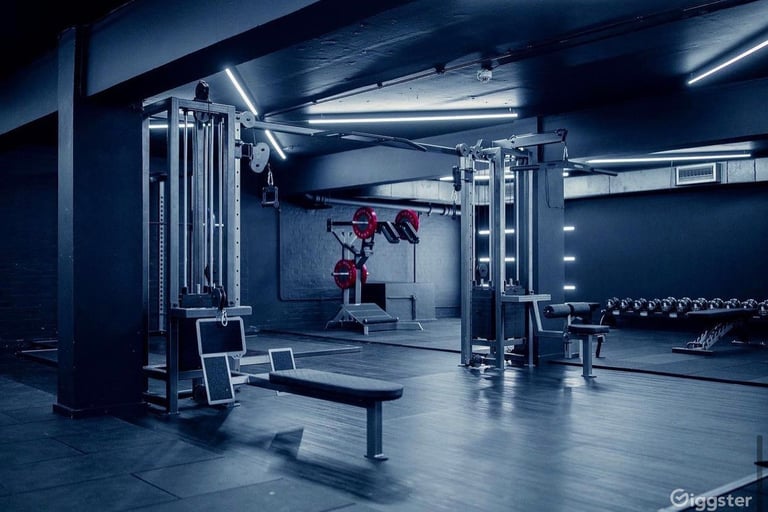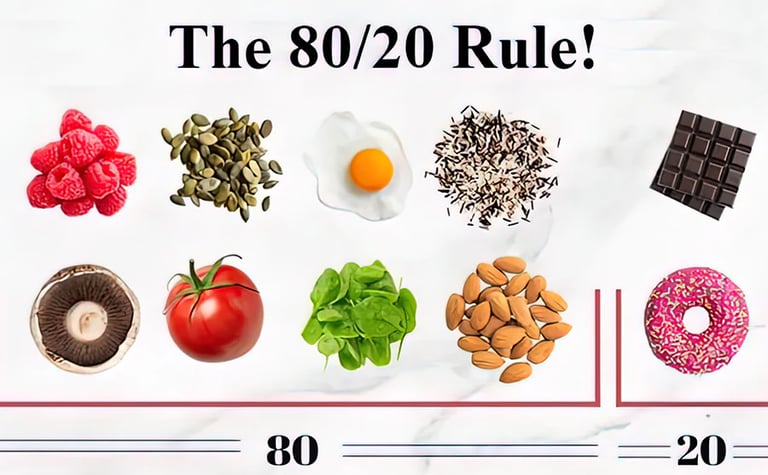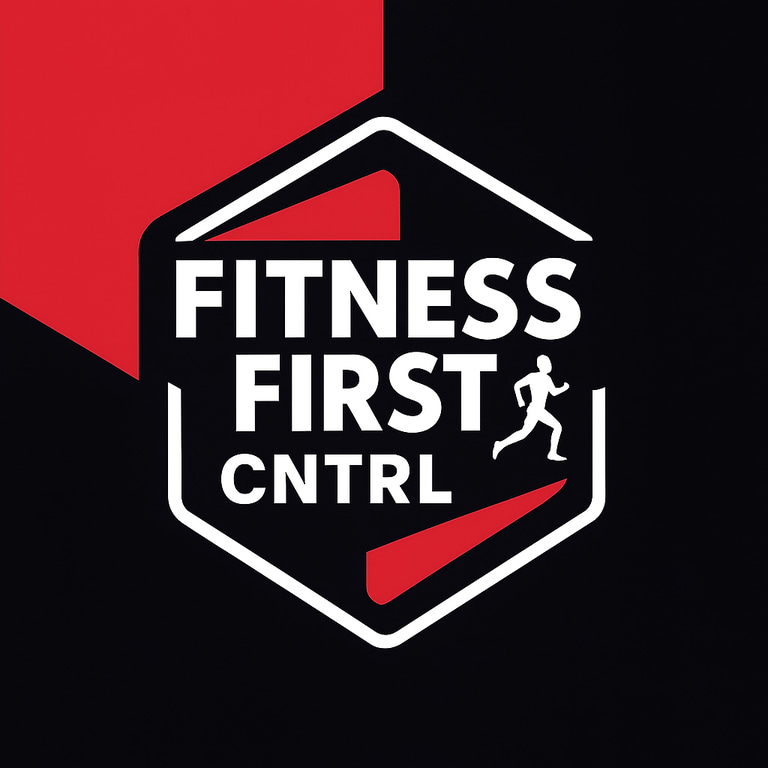USE CODE "fitnow" FOR 30% OFF your first purchase
Stronger and Fitter in 30 Days: Beginner Workouts, Nutrition & Mindset You’ll Actually Stick To
Consistency is key 🔑
Fitness First
6/29/20258 min read


Starting your fitness journey can feel overwhelming. Maybe you don’t know where to begin, or you’re unsure if the gym is right for you. Maybe you want to work out at home but don’t know what exercises to do without equipment. Or perhaps nutrition advice feels like a confusing maze, and motivation can sometimes disappear entirely.
If any of this sounds familiar, you’re in the right place. This comprehensive beginner’s guide breaks down everything you need to know to build a strong foundation — no matter if you plan to train at home or in a gym. You’ll get practical workout tips, straightforward nutrition advice, key muscle groups to focus on, and crucial mindset shifts that help you stay consistent and motivated.
Let’s dive in!
Gym Workouts vs. Home Workouts: Which Should Beginners Choose?
One of the biggest questions for newcomers is whether to join a gym or start working out at home. Both options have their pros and cons, and ultimately, the best choice is the one that fits your lifestyle and keeps you consistent.
Gyms offer access to a wide variety of equipment — from machines that guide your form to free weights and cardio machines. For many, being surrounded by others exercising creates a motivating atmosphere. Plus, gyms often offer group classes and personal trainers to guide you. However, gyms can feel intimidating at first, especially if you’re unsure how to use equipment. There are also monthly fees, and you have to factor in travel time.
On the other hand, home workouts are incredibly convenient. You don’t have to leave your house, which saves time and money. Plus, you have the privacy to learn at your own pace without feeling self-conscious. The downside is the limited equipment and the challenge of staying focused without the gym environment. You might also find it harder to progressively challenge yourself without weights.
For beginners, I recommend starting where you feel most comfortable — because consistency beats everything. If the gym scares you, start with simple home workouts, build confidence, then explore gym workouts later if you want to expand your routine.
Beginner Workout Plans: No Equipment and Gym Options
Let’s get practical. Here are two beginner-friendly workout plans you can start right now.
Home Workout (No Equipment Needed)
You don’t need fancy gear to get a great workout. These bodyweight exercises target multiple muscle groups and build a solid base:
Bodyweight squats: Great for legs and glutes. Aim for 3 sets of 12–15 reps. Focus on form — keep your chest up and knees tracking over your toes.
Push-ups: Perfect for chest, shoulders, and arms. Beginners can modify by doing them on their knees or against a wall. Try for 3 sets of 8–12 reps.
Glute bridges: Activate your glutes and hamstrings with 3 sets of 15 reps.
Planks: Core stability is key. Hold for 30–60 seconds for 3 sets.
Jumping jacks or high knees: These add a cardio boost between sets. Do 30 seconds to keep your heart rate up.
Try to do this routine 3–4 times a week. As you get stronger, increase reps or slow down movements to make it harder.
Gym Workout for Beginners
If you have access to a gym, a simple full-body plan 3 days a week sets a strong foundation:
Day 1 (Strength Focus): Leg press, lat pulldown, dumbbell chest press, seated row, plank.
Day 2 (Cardio & Core): Incline treadmill walk, Russian twists, mountain climbers, hanging leg raises.
Day 3 (Upper & Lower Split): Goblet squats, cable triceps pushdowns, dumbbell rows, dumbbell shoulder press.
Aim for 3 sets of around 10 reps for strength exercises, and track your progress by adding small weight increments over time. This helps build muscle gradually and safely.
Nutrition Advice That’s Actually Doable for Beginners
You’ve probably heard countless nutrition tips that leave you more confused than motivated. The truth is, you don’t need to overhaul your diet overnight or cut out all your favorite foods. Getting the basics right will fuel your progress and keep you energized.
Your body needs a balance of protein, carbohydrates, and fats. Protein is essential for muscle repair and growth — good sources include chicken, eggs, tofu, Greek yogurt, and legumes. Carbs provide the energy you’ll need to push through workouts; opt for whole grains, fruits, and vegetables over sugary snacks. Healthy fats from avocados, olive oil, nuts, and fatty fish support hormone balance and overall health.
One of the biggest rookie mistakes is obsessing over perfect eating. Instead, focus on consistency — aim to eat balanced meals about 80% of the time. Stay hydrated by drinking at least 2 to 3 liters of water daily, which helps with performance and recovery.
The 80/20 rule has shown to be effective in managing and losing weight: https://www.myprotein.com/thezone/nutrition/nutritionist-reviews-80-20-diet/
Remember, fitness isn’t about punishment or deprivation. It’s about nourishing your body to be strong and capable.
The Muscle Groups You Should Focus On as a Beginner
To build a balanced and injury-free body, it’s important to train all the major muscle groups. This helps your body look proportional and supports good posture and everyday function.
For the upper body, focus on your chest with push-ups or chest presses, your back with rows or pulldowns, and shoulders with presses or raises. Don’t forget your arms — biceps curls and triceps pushdowns help with tone and strength.
The lower body includes quads, hamstrings, glutes, and calves. Exercises like squats, lunges, glute bridges, and calf raises cover these areas.
Lastly, a strong core keeps you stable and protects your lower back. Incorporate planks, mountain climbers, and leg raises regularly.
🟩 Upper Body: Strength, Posture & Confidence
Your upper body includes your chest, back, shoulders, biceps, and triceps. These muscle groups help with posture, everyday activities (like lifting groceries or reaching overhead), and give you that confident, upright look.
💪 Key Muscle Groups to Target:
Chest (push-ups, chest presses): Supports pushing movements, posture, and gives that “lifted” appearance.
Back (rows, lat pulldowns): Crucial for posture and spinal health. A strong back can help reduce slouching and back pain.
Shoulders (shoulder presses, lateral raises): Essential for overhead strength and arm mobility.
Arms (biceps curls, triceps dips or pushdowns): Help with lifting, pushing, and pulling. Also, yes — they’re part of that toned look many beginners want.
🔰 Beginner Tip: When training your upper body, always balance “push” exercises (like push-ups) with “pull” exercises (like rows). This keeps your shoulders healthy and your posture aligned.
🟨 Lower Body: Powerhouse of Your Body
Your lower body is where most of your strength and calorie-burning power comes from. These muscles help you walk, run, climb stairs, and stabilize your entire body.
🦵 Key Muscle Groups:
Quads (front of thighs): Worked through squats, lunges, and step-ups.
Hamstrings (back of thighs): Activated during deadlifts, glute bridges, and leg curls.
Glutes (your butt!): One of the most powerful muscle groups. Strengthening them improves posture, reduces lower back pain, and boosts athletic performance.
Calves (lower legs): Help with balance and mobility. Calf raises and jumping exercises target them well.
🔰 Beginner Tip: Don’t shy away from lower body work. Training your legs and glutes not only shapes your body but burns more calories, since these are your largest muscle groups.
🟥 Core: Stability, Strength & Injury Prevention
The core is about way more than six-packs. It includes your abs, obliques (side abs), and deep stabilizing muscles that wrap around your spine and pelvis. A strong core keeps your body balanced, improves posture, supports breathing, and protects your back during almost every movement.
🔑 Core Movements:
Planks (static hold): Build endurance and stability.
Mountain climbers (dynamic): Work your abs while adding cardio.
Leg raises and dead bugs: Strengthen deep core muscles and improve control.
🔰 Beginner Tip: You don’t need hundreds of crunches. Core strength is about control and consistency, not just repetitions.
Beginners often fall into the trap of training only their favorite muscles or the ones that look good. But this creates imbalances that lead to poor posture, joint pain, or even injuries over time. For example, working your chest without balancing it with back work can cause your shoulders to round forward — leading to the dreaded “desk hunch.”
💡 Why Full-Body Training Matters
By training all major muscle groups — even if it's just 2–3 times a week — you’ll:
Burn fat more efficiently
Build a balanced, strong, and lean physique
Prevent injury and recover faster
Feel more confident in your movement, posture, and energy
Mindset Matters: How to Stay Consistent and Motivated
Physical training is only half the battle — your mindset plays a huge role in whether you stick with fitness long term.
Start by setting realistic goals. Instead of “lose 10 pounds in one week,” try “exercise 3 times this week and drink more water.” Celebrate small wins — they build momentum.
Focus on habits over perfection. Missing one workout doesn’t mean failure. What matters most is showing up regularly over months.
Track progress in different ways: photos, how your clothes fit, and how you feel mentally and physically. Avoid comparing yourself to others — your journey is unique, and social media often shows only the highlight reels.
Creating rituals helps, too. Lay out your workout clothes the night before, pick motivating music, or have a post-workout routine you enjoy.
The Biggest Mistake Beginners Make — And How to Avoid It
The #1 mistake most beginners make? Trying to do everything at once. You get inspired (or frustrated), and suddenly you're doing six intense workouts a week, cutting carbs, tracking every bite, and expecting to see abs in two weeks.
This “all or nothing” mindset might feel motivating at first, but it almost always leads to burnout, injuries, or quitting altogether. Your body isn’t used to the new demands, and your mind hasn’t built the habits yet — it’s like trying to sprint before you’ve learned to walk.
Here’s the truth:
You don’t need to be perfect. You need to be consistent.
Start with just 2–3 workouts a week, build a few solid meals into your routine, and give your body and mind time to adapt. Progress in fitness isn’t just about how hard you go — it’s about how long you stay in the game.
📌 Progress isn’t made by going hard for 5 days — it’s made by showing up for 5 weeks, 5 months, 5 years.
When you focus on small, repeatable actions — like walking more, doing 20-minute bodyweight workouts, or swapping one processed snack for something more nourishing — you create a foundation you can actually stick to. And that’s what leads to real change.
🔥 Ready to Get Fitter, Stronger — and Finally Stay Consistent?
If you’ve made it this far, it means you’re serious about making a change. And guess what? You don’t have to figure it all out on your own.
🎯 I’ve created a simple, beginner-friendly fitness guide that gives you:
Step-by-step home + gym workouts (zero guesswork)
A flexible weekly routine you can actually stick to
A quick-start nutrition cheat sheet (no calorie-counting stress)
A mindset journal to help you stay motivated, not just start strong
A habit tracker
List of high protein foods that should be staples in your diet.
And right now? It’s on sale for a limited time — just $3.75. That’s less than a smoothie or your favorite coffee order. ☕
⚡ Why Grab It Now?
✅ Instant access — start today
✅ No overwhelm — designed for real people, real schedules
✅ Limited-time discount — once it’s gone, the price goes up
✅ Built for beginners — no gym intimidation, no jargon
💡 92% of beginners quit in the first month. This is your moment to be the 8% who don’t.
🎁 Bonus: If you order now, you’ll also get a free printable workout tracker to help you stay on track every single week. (Only available during this sale.)
👇 Click the button below to get it now! 👇
Enjoyed this post? Join our email list for more insights, tips, and exclusive content delivered straight to your inbox. No spam — just the good stuff.
Enjoyed this post? Want more content like this? Drop your email in the comments below and we’ll make sure you get all our latest updates, tips, and exclusive content right in your inbox!






